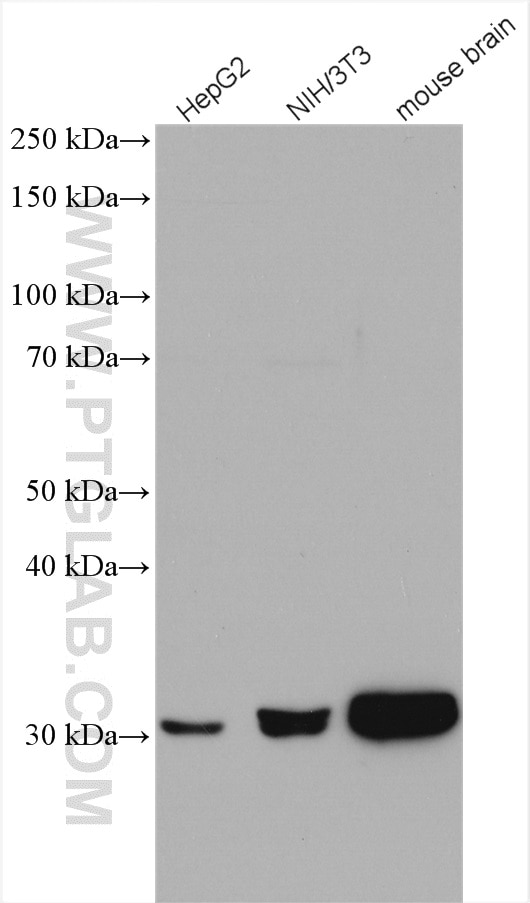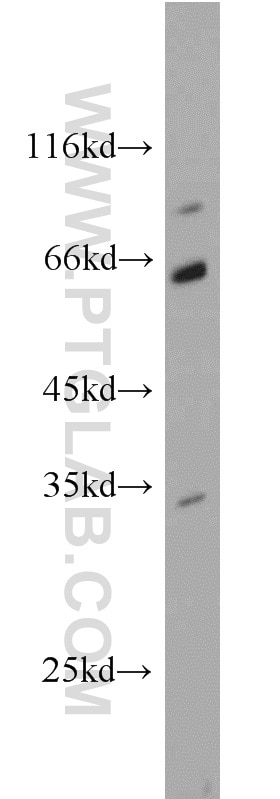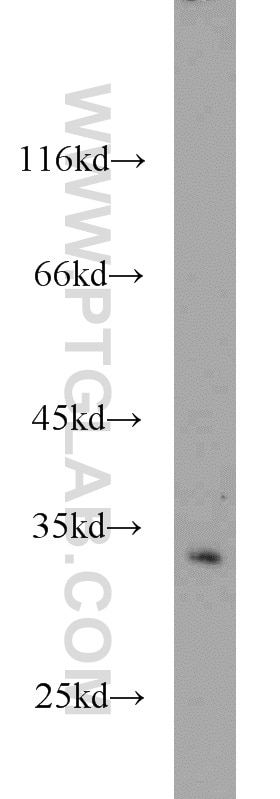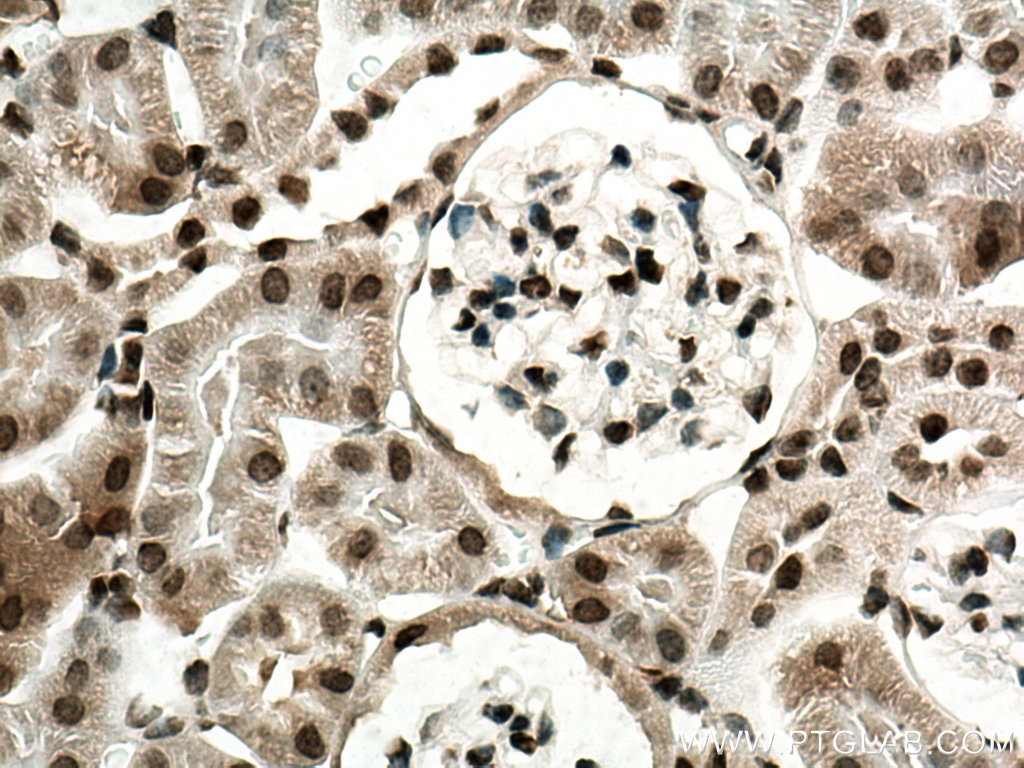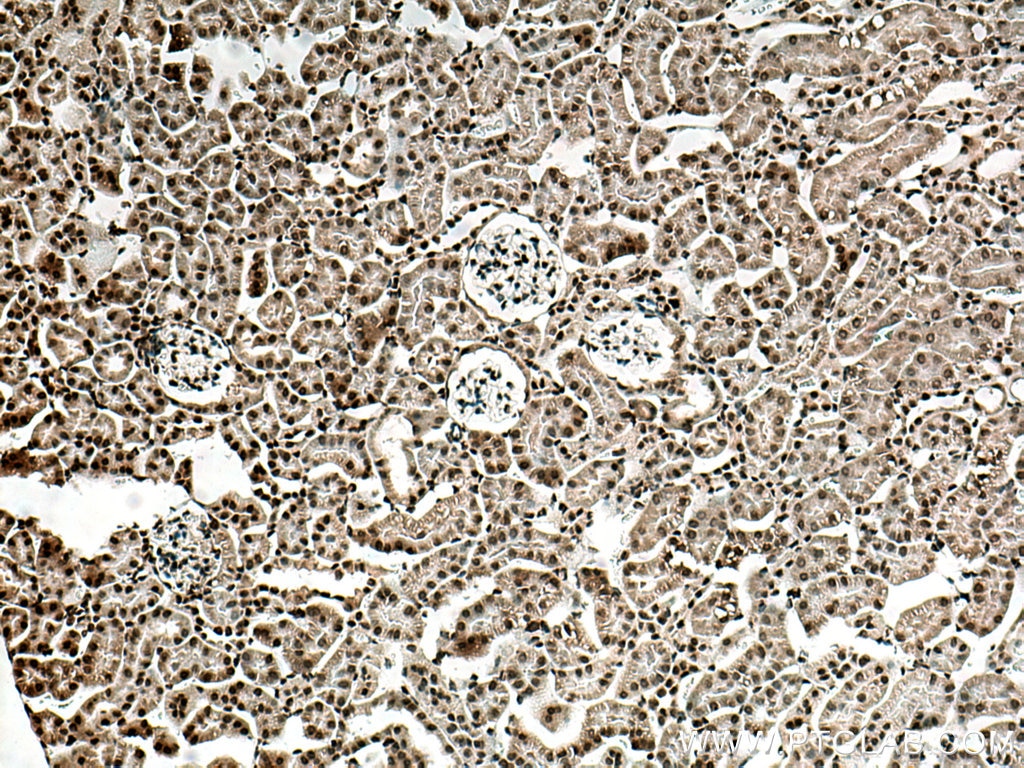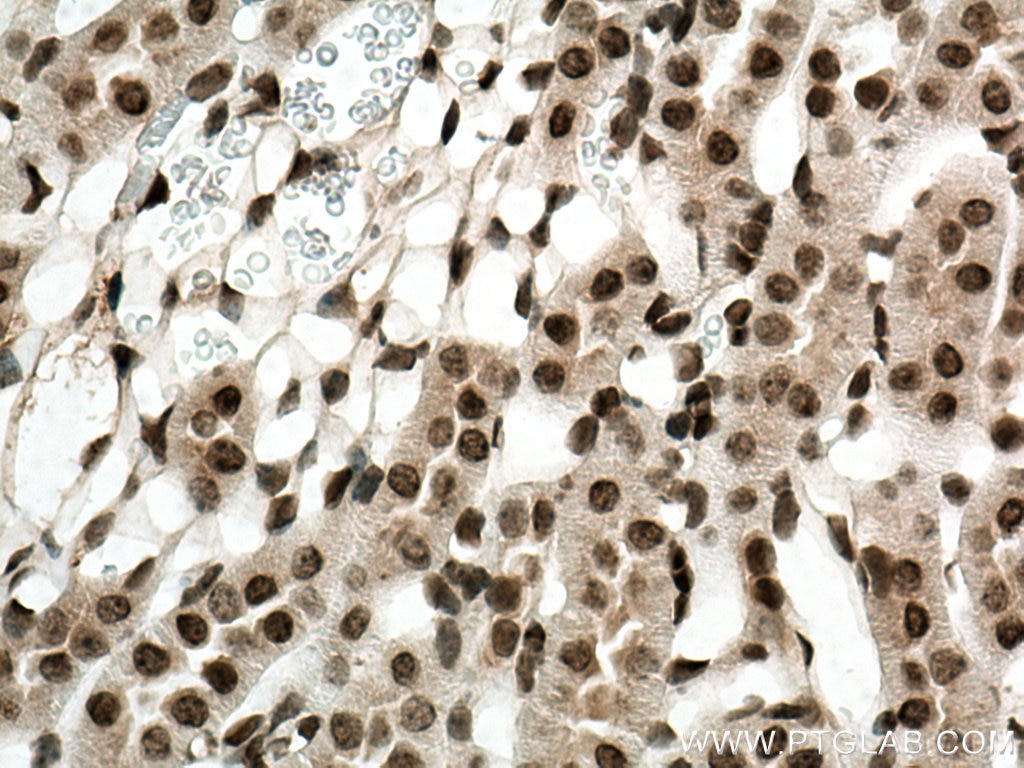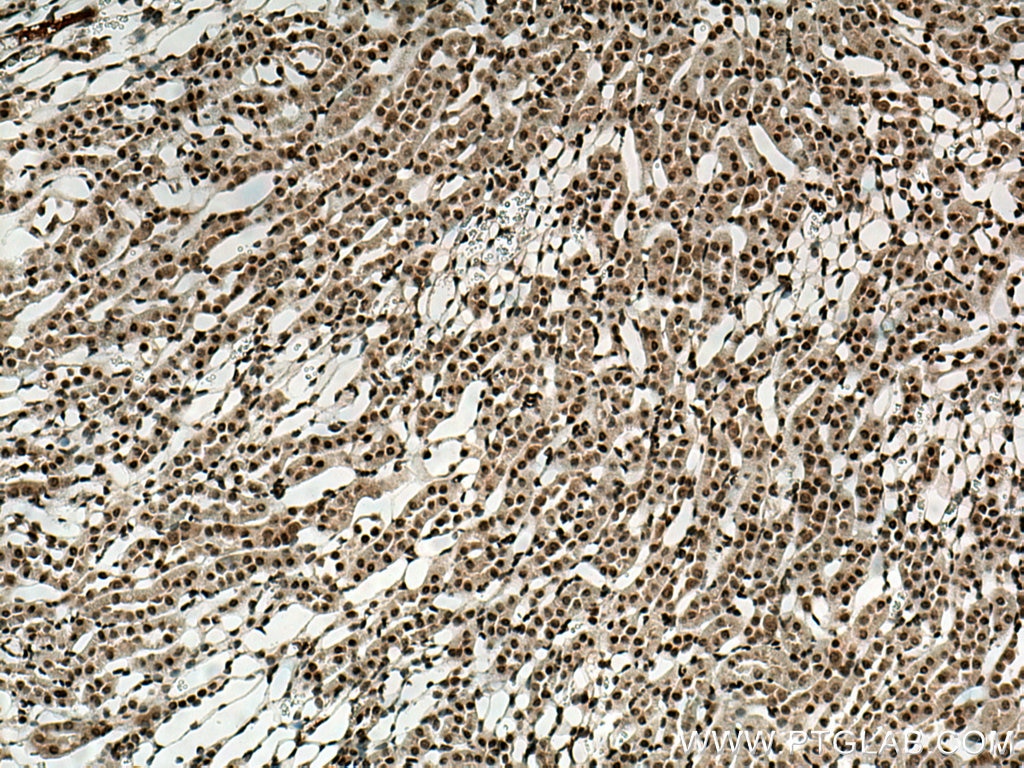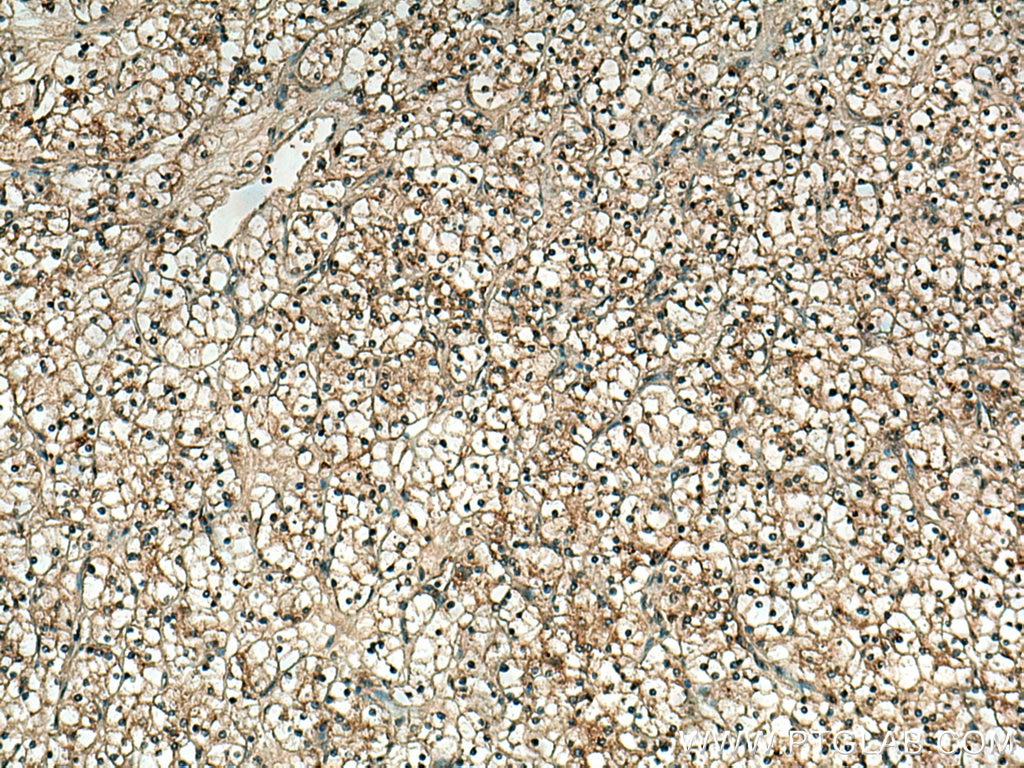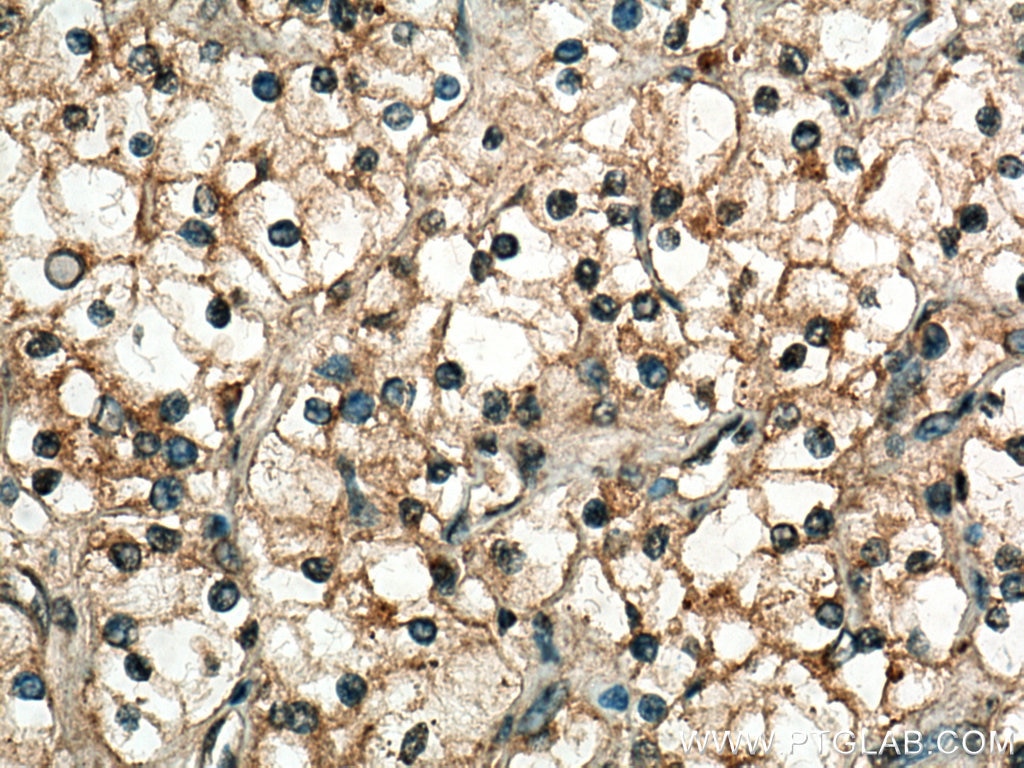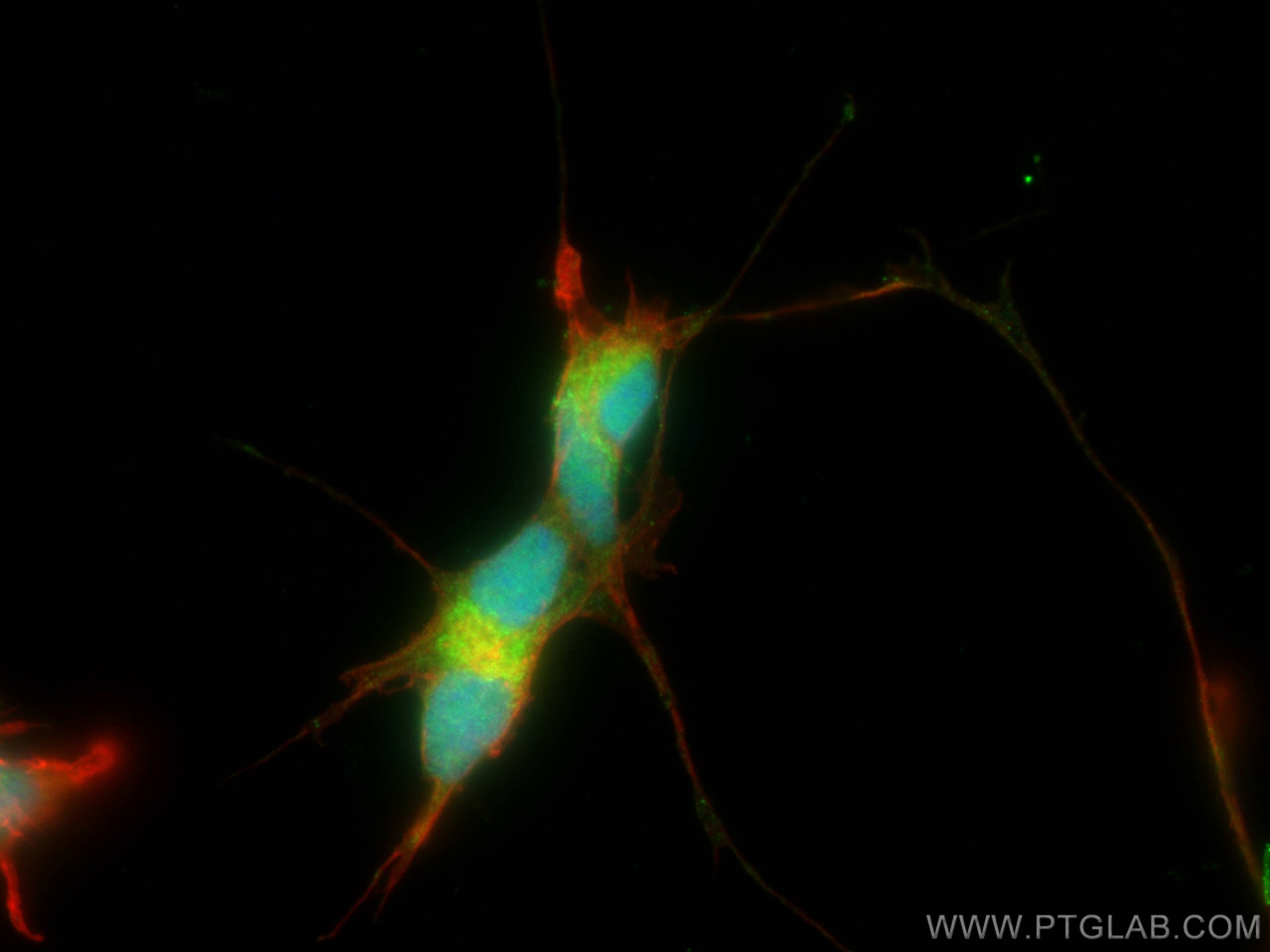- Phare
- Validé par KD/KO
Anticorps Polyclonal de lapin anti-CDK5
CDK5 Polyclonal Antibody for WB, IF, IHC, ELISA
Hôte / Isotype
Lapin / IgG
Réactivité testée
Humain, rat, souris
Applications
WB, IHC, IF/ICC, ELISA
Conjugaison
Non conjugué
N° de cat : 10430-1-AP
Synonymes
Galerie de données de validation
Applications testées
| Résultats positifs en WB | cellules HepG2, cellules NIH/3T3, tissu cérébral de souris, tissu pancréatique de souris |
| Résultats positifs en IHC | tissu rénal de souris, tissu de carcinome à cellules rénales humain il est suggéré de démasquer l'antigène avec un tampon de TE buffer pH 9.0; (*) À défaut, 'le démasquage de l'antigène peut être 'effectué avec un tampon citrate pH 6,0. |
| Résultats positifs en IF/ICC | cellules SH-SY5Y, |
Dilution recommandée
| Application | Dilution |
|---|---|
| Western Blot (WB) | WB : 1:500-1:2000 |
| Immunohistochimie (IHC) | IHC : 1:50-1:500 |
| Immunofluorescence (IF)/ICC | IF/ICC : 1:200-1:800 |
| It is recommended that this reagent should be titrated in each testing system to obtain optimal results. | |
| Sample-dependent, check data in validation data gallery | |
Applications publiées
| KD/KO | See 2 publications below |
| WB | See 13 publications below |
Informations sur le produit
10430-1-AP cible CDK5 dans les applications de WB, IHC, IF/ICC, ELISA et montre une réactivité avec des échantillons Humain, rat, souris
| Réactivité | Humain, rat, souris |
| Réactivité citée | rat, Humain, souris |
| Hôte / Isotype | Lapin / IgG |
| Clonalité | Polyclonal |
| Type | Anticorps |
| Immunogène | CDK5 Protéine recombinante Ag0686 |
| Nom complet | cyclin-dependent kinase 5 |
| Masse moléculaire calculée | 31 kDa, 33 kDa |
| Poids moléculaire observé | 33 kDa |
| Numéro d’acquisition GenBank | BC005115 |
| Symbole du gène | CDK5 |
| Identification du gène (NCBI) | 1020 |
| Conjugaison | Non conjugué |
| Forme | Liquide |
| Méthode de purification | Purification par affinité contre l'antigène |
| Tampon de stockage | PBS avec azoture de sodium à 0,02 % et glycérol à 50 % pH 7,3 |
| Conditions de stockage | Stocker à -20°C. Stable pendant un an après l'expédition. L'aliquotage n'est pas nécessaire pour le stockage à -20oC Les 20ul contiennent 0,1% de BSA. |
Informations générales
Cyclin-dependent kinase 5 (CDK5), belongs to the cyclin-dependent kinase family, is a proline-directed serine/threonine-protein kinase that essential for neuronal cell cycle arrest and differentiation and may be involved in apoptotic cell death in neuronal diseases by triggering abortive cell cycle re-entry. CDK5 predominantly expressed in neurons where it phosphorylates both high molecular weight neurofilaments and microtubule-associated protein tau.
Protocole
| Product Specific Protocols | |
|---|---|
| WB protocol for CDK5 antibody 10430-1-AP | Download protocol |
| IHC protocol for CDK5 antibody 10430-1-AP | Download protocol |
| IF protocol for CDK5 antibody 10430-1-AP | Download protocol |
| Standard Protocols | |
|---|---|
| Click here to view our Standard Protocols |
Publications
| Species | Application | Title |
|---|---|---|
Signal Transduct Target Ther SARS-CoV-2 hijacks cellular kinase CDK2 to promote viral RNA synthesis | ||
Neuropharmacology Inhibition of Cdk5 rejuvenates inhibitory circuits and restores experience-dependent plasticity in adult visual cortex.
| ||
Cells Phosphorylation-Induced Ubiquitination and Degradation of PXR through CDK2-TRIM21 Axis.
| ||
Am J Transl Res Hypoxia induces HT-22 neuronal cell death via Orai1/CDK5 pathway-mediated Tau hyperphosphorylation. | ||
J Cell Biochem Nestin protects mouse podocytes against high glucose-induced apoptosis by a Cdk5-dependent mechanism. | ||
BMC Neurol The LPA-CDK5-tau pathway mediates neuronal injury in an in vitro model of ischemia-reperfusion insult. |
Avis
The reviews below have been submitted by verified Proteintech customers who received an incentive forproviding their feedback.
FH XinN (Verified Customer) (02-27-2023) | It can recognize endogenous CDK5 with a right MW.
 |
FH Kathryn (Verified Customer) (04-22-2022) | This CDK5 antibody works very well to stain the nuclei of developed mouse oocytes.
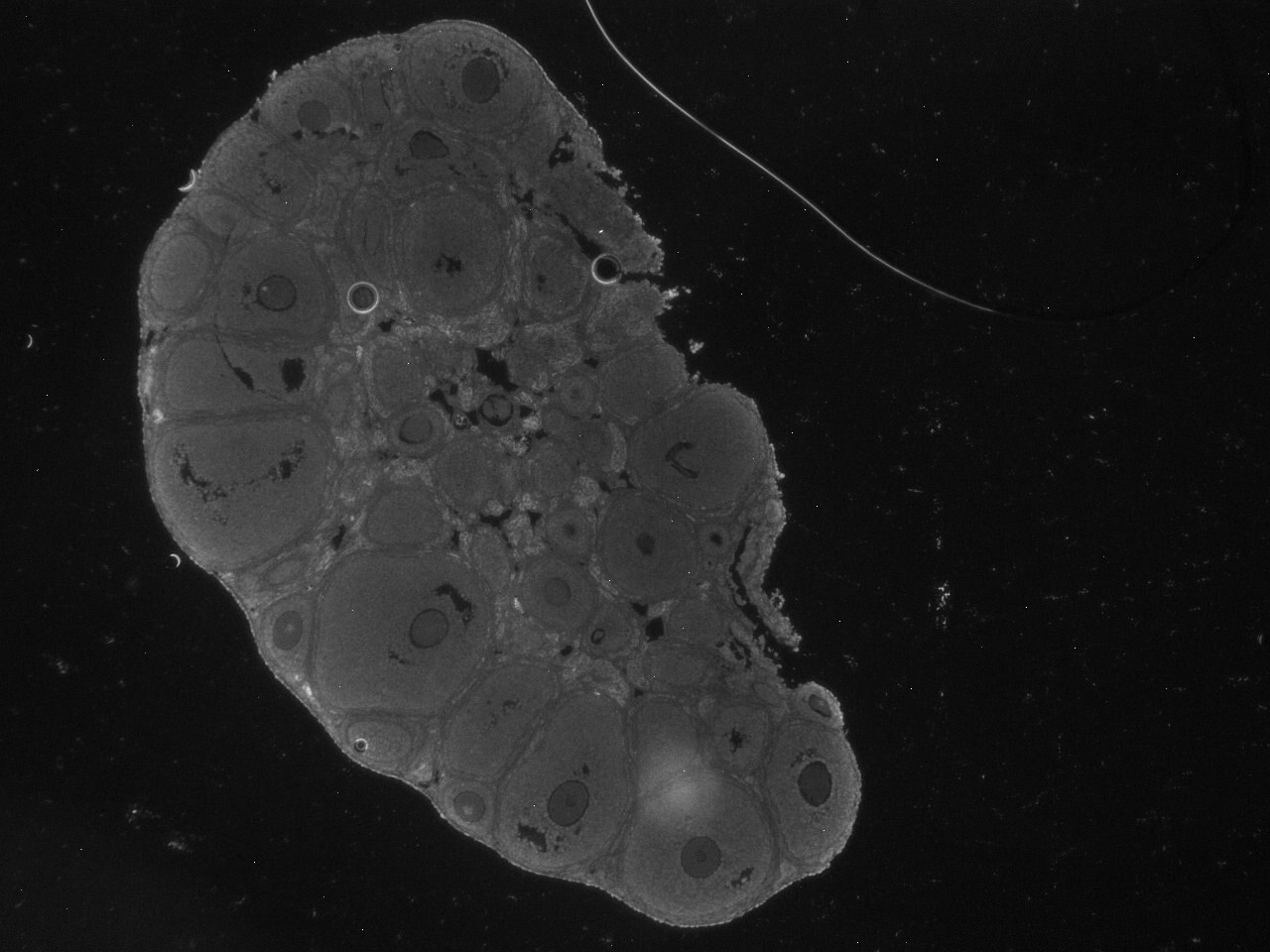 |
